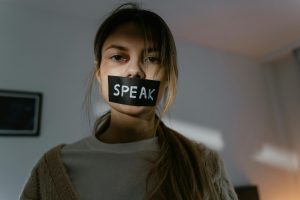Voting Rights and Voter ID Laws
Voting is a fundamental right in any democratic country. It is the means by which citizens participate in the decision-making process and have a say in shaping the future of their country. However, as simple as it may seem, voting has been a subject of controversy in recent years due to the implementation of Voter ID Laws. While the laws are intended to prevent voter fraud, opponents argue that they disproportionately affect marginalized communities and limit access to voting. In this article, we will delve into the debate surrounding Voting Rights and Voter ID Laws, examining their impact, arguments for and against, and potential solutions to ensure fair and equal voting rights for all citizens.
The History of Voting Rights
Since the establishment of the United States, the right to vote has been a contentious issue. The United States Constitution originally granted voting rights only to white male property owners, but throughout history, many movements have fought for expansion and protection of voting rights. The 15th Amendment, ratified in 1870, gave all men the right to vote regardless of race, and the 19th Amendment, passed in 1920, granted women the right to vote. However, it was not until the Civil Rights Movement in the 1960s that voter disenfranchisement among historically marginalized communities, such as African Americans and Native Americans, was challenged and addressed.
What Are Voter ID Laws?
Voter ID laws refer to legislation that requires voters to present an official form of identification before casting their ballots. These laws aim to prevent voter fraud by ensuring that only eligible citizens vote in elections. The type of identification required varies by state, but they generally include government-issued IDs, such as driver’s licenses, passports, or military IDs.
Arguments for Voter ID Laws
One of the main arguments for Voter ID laws is that they prevent voter fraud. Proponents believe that strict identification requirements will hinder individuals from voting multiple times or voting under another person’s name. Also, the laws are thought to reduce the likelihood of non-citizens participating in elections, ensuring that only eligible voters cast their ballots.
Another argument is that the laws promote confidence in the electoral process. By implementing measures to prevent fraud, voters may have more confidence in the outcomes of an election, resulting in higher voter turnout and increased public trust in the election system.
Arguments Against Voter ID Laws
Opponents of Voter ID laws argue that these laws disproportionately affect marginalized communities and limit their access to voting. Obtaining a government-issued ID can be challenging and costly, and this can disproportionately impact low-income, elderly, and minority voters. According to the Brennan Center for Justice, around 21 million Americans do not have government-issued IDs, and obtaining one can be a significant barrier to exercising their right to vote.
Furthermore, opponents believe that voter fraud is not a widespread issue and that Voter ID laws may create more harm than good. The Voter ID laws have been challenged in court, with some states facing allegations of voter suppression, especially targeting minority voters. Critics also argue that the laws may discourage eligible voters from participating in elections, ultimately suppressing voter turnout.
Solutions for Ensuring Fair and Equal Voting Rights
The debate surrounding Voter ID laws is ongoing, and it is clear that changes need to be made to ensure fair and equal voting rights for all citizens. One potential solution is to make it easier for citizens to obtain government-issued IDs. This could include providing IDs at no cost or implementing mobile DMV units that can bring identification services to those who have difficulty accessing them.
Another solution is to expand the list of acceptable forms of identification. Accepting alternative forms of identification, such as student IDs, utility bills, or sworn statements, could make it easier for eligible voters to cast their ballots without significant barriers.
Additionally, addressing the root causes of voter disenfranchisement, such as poverty and racial discrimination, can also help ensure fair and equal voting rights for all citizens. By tackling these issues, eligible voters from marginalized communities may be more likely to obtain government-issued IDs and participate in the electoral process.
Conclusion
Voting Rights and Voter ID laws continue to be a hotly debated topic. While the laws aim to prevent voter fraud, they have also been criticized for suppressing voter turnout, particularly among marginalized communities. As we continue to strive for equality and fair representation in the electoral process, it is essential to consider the impact and potential solutions to ensure that all eligible citizens have the opportunity to exercise their fundamental right to vote.











